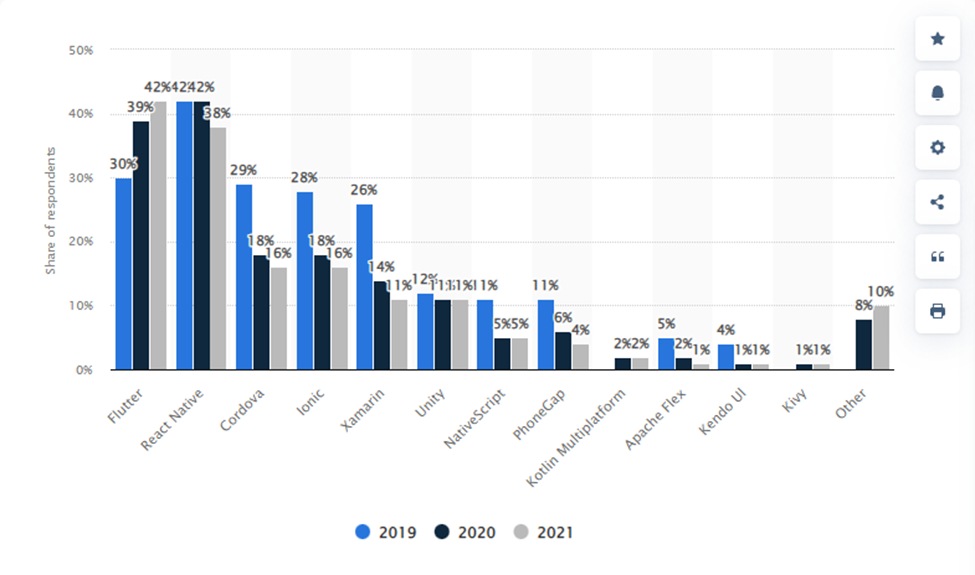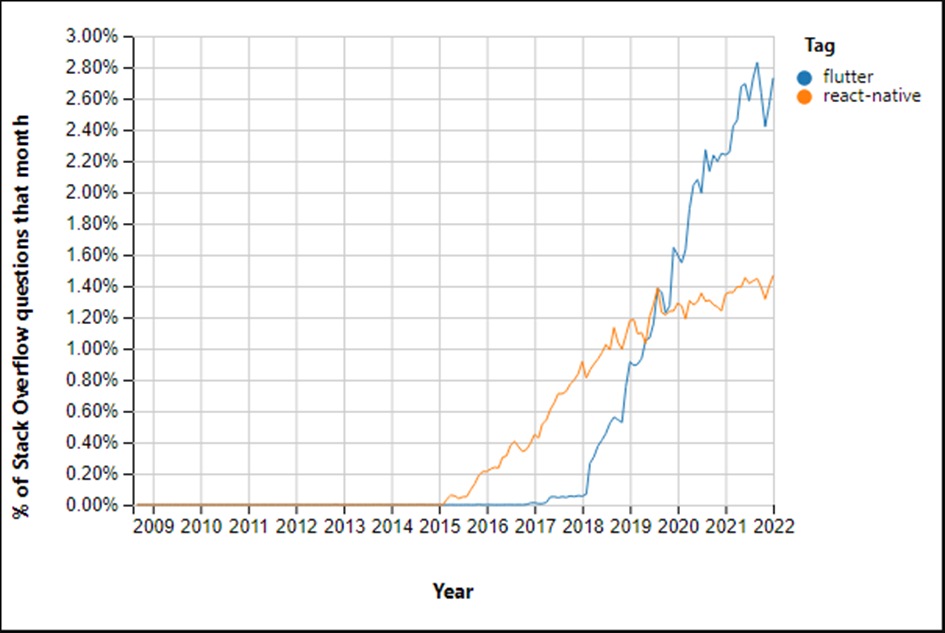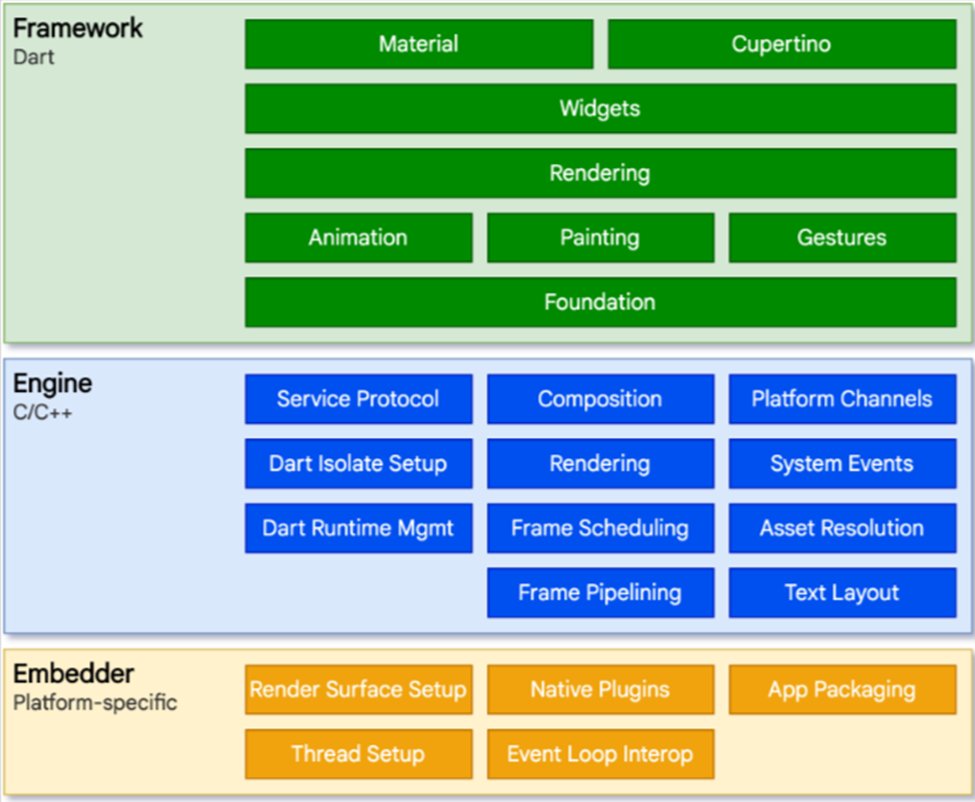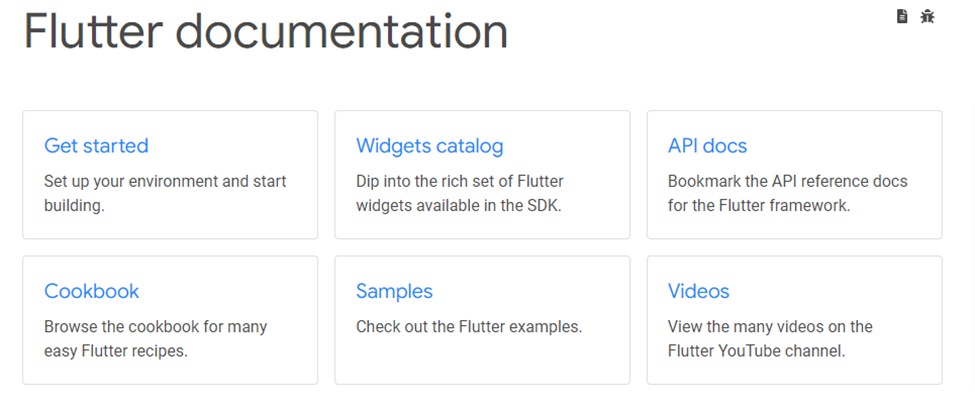Android App Development – Since its launch in 2017, Flutter has redefined the way start-ups, small businesses, individual developers, and professional development teams build apps for mobile, desktop, and the web.
This Google product is best described as a feature-rich, dynamic, and open-source UI software development kit. As a frontend framework, Flutter is ideal for building applications for Android, iOS, macOS, Linux, and Windows. And the best part is that all these apps can be built from a single codebase!
The framework offers a bounty of sophisticated features along with excellent user experience and flawless app performance. In 2021, it was voted the most popular cross-platform framework by developers around the world. The survey showed that 42% of developers use Flutter.

Because of this and many other reasons, Flutter is deemed the future of Android app development. So, if you are planning to hire Android developer, make sure to test their knowledge of Flutter as well.
Table of Contents
The Impact of Flutter on the Future of Android App Development
When talking about the future of Android app development services or app development in general, one has to mention Flutter and its impact.
As a development framework, Flutter is the first of its kind. It comes with a complete environment and a robust ecosystem that offers everything from design-specific attributes to futuristic and performance-savvy features for any app development project.
Flutter allows developers to build beautiful and natively compiled apps for multiple platforms from a single codebase.
Running separate development teams for each mobile platform is a hassle that sucks up resources. Flutter eliminates this problem by allowing one development team to work on all platforms.
Furthermore, Flutter can enhance the features and capabilities of Android and iOS within an existing app. That makes it the best framework for making existing Android apps better. All of this has led to the meteoric rise of Flutter and solidified its place in the app development industry.

Flutter Holds the Future of Android App Development – Here’s why?
It has only been a few years since Flutter’s launch, but the speed at which the platform is being updated has already put it several steps ahead of many of its competitors.
Over the last few years, Flutter has become one of the best cross-platform frameworks, surpassing React Native and claiming the number-one spot.
So, what makes Flutter so popular and why is it considered the future of Android app development? Let’s explore a few of the most compelling reasons.
It is Platform-Agnostic:
Anyone who plans to build a mobile app knows the importance of having both iOS and Android versions of their product. As of 2021, Android has the strongest hold on the mobile app market with a 72% market share. With around 27% market share, iOS holds second place.
Building a single native application means ignoring a large part of the market and limiting the success of the application. On the other hand, building separate native apps is costly and time-consuming.
Flutter solves this problem by making cross-platform app development simple. The framework’s single codebase eliminates the need for building separate code for different platforms.
Most importantly, Flutter’s expertise in cross-platform app development goes far beyond mere code portability. Unlike other frameworks such as Xamarin and React Native, Flutter helps you build platform-agnostic user interfaces. It is possible due to its Skia rendering engine, which does not require platform-specific UI components.
It Has an Innovative Layered Structure:
Flutter has a layered system that makes up the framework, the engine, and the platform-specific embedders. Flutter apps are built with Google’s Dart programming language. The Flutter Engine is written mainly in C and C++, and the Skia library is at the core of the framework’s graphics capabilities.
Here’s a visual representation of Flutter’s architectural layers:

Dart lays the foundation for several performance advantages that Flutter offers. It supports both JIT (just-in-time) and AOT (ahead-of-time) compilation.
AOT compiles code into low-level native code, allowing the app to load fast and deliver high performance. JIT facilitates the hot reload capability, which cuts down development time significantly.
Furthermore, Dart compiles directly to native ARM (Advanced RISC Machines) or Intel x64 code. That minimizes performance differences between Flutter apps and native apps.
The platform’s innovative architecture makes adding new functionalities or accommodating new users quick and simple. This makes Flutter highly scalable and extensible.
It is Easy to Learn and Use:
One of the biggest advantages of Flutter is that it is easy to pick up. You don’t need to have extensive development experience to be able to use this framework.
Developers with decent knowledge of common programming languages such as Java, C#, Python, or other object-oriented languages should have no problem adding Dart and Flutter to their skill set.
Furthermore, Flutter’s extensive widget library makes it easy for inexperienced developers to build apps without having to write complex code.
Flutter’s excellent documentation is also worthy of praise. Apart from the general reference manual, the official website offers resources to help developers do everyday tasks.

Flutter’s growing popularity has led to the creation of a thriving community that is always ready to provide resources and assistance to those in need. New developers can find help and information through forums, blogs, video tutorials, and other resources.
It Scales Well:
Flutter is highly scalable as it allows developers to increase the user base or add features to an app without breaking it.
At the backend, Flutter uses Google’s Firebase app, which was designed with scalability in mind. Firebase offers real-time database updates, ensuring data syncs fast among clients.
Firebase minimizes and optimizes the number of updates required for syncing. That means adding functionalities or users does not affect performance negatively.
It Helps You Build Apps with Excellent UX:
To be truly successful, a mobile app needs to be attractive, well-designed and packed with useful features and functionalities. A stunning user interface and satisfying user experience are at the heart of the most popular mobile apps.
Flutter excels at building apps that deliver the highest quality UI and UX. Its built-in widget catalog aims at delivering visually exciting and high-performance app elements. Flutter makes building UIs (both basic and complex) almost effortless.
These are the most common reasons for Flutter’s meteoric rise to popularity, and they also show why this frontend framework holds the future of Android app development and cross-platform app development.
Wrapping Up
While Flutter is lauded as the best cross-platform app development framework, its functionalities are better suited for Android development than iOS.
There have been reports of iOS features lagging every time Flutter releases updates or fixes. After all, both Flutter and Android share the same parent (Google), and Android has the largest share of the current mobile app market.
Since Flutter is a Google product, Android developers are naturally drawn to it. Some even go as far as to suggest that new Android features are added to Flutter faster than new iOS features are added to the framework.
The current scenario tells us that Flutter’s popularity is here to stay, and its role in Android app development is getting stronger by the day. Anyone wishing to get into Android or cross-platform app development should try Flutter.

